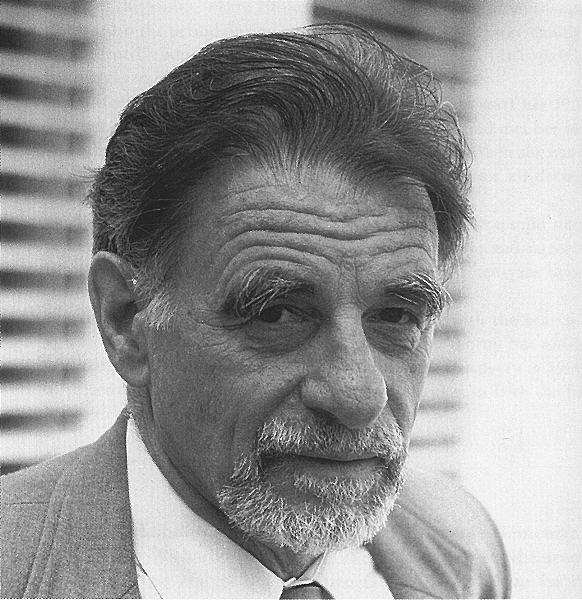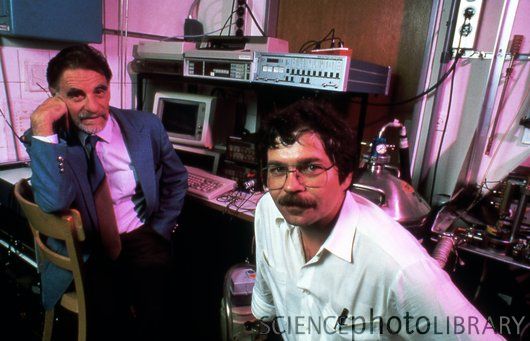<Back to Index>
- Physicist Karl Alexander Müller, 1927
- Writer Pietro Aretino, 1492
- Founder of the Social Democratic Workers' Party Pieter Jelles Troelstra, 1860
PAGE SPONSOR


Karl Alexander Müller (born April 20, 1927) is a Swiss physicist and Nobel laureate. He received the Nobel Prize in Physics in 1987 with Johannes Georg Bednorz for their work in superconductivity in ceramic materials.
Karl Müller was born in Basel, Switzerland, on 20 April 1927. His family immediately moved to Salzburg, Austria, where his father was studying music. He and his mother then moved to Dornach, near Basel, to the home of his grandparents. Then they moved to Lugano, in the Italian speaking part of Switzerland, where he learned to speak Italian fluently. His mother died when he was 11.
In
the spring of 1956 he married Ingeborg Marie Louise Winkler. They had a
son, Eric, in the summer of 1957, and a daughter, Silvia, in 1959. After his mother’s death, Müller was sent to school at the Evangelical College in Schiers,
in the eastern part of Switzerland. Here he studied for seven years
from 1938 to 1945, obtaining his baccalaureate (Mature). Thus he was a
student in a neutral country during World War II.
He attended classes which studied the world situation, and participated
in discussion groups. This had a profound effect on his career, and
life. Müller then enrolled in the Physics and Mathematics Department of the Swiss Federal Institute of Technology (ETH) in Zürich, where he seriously considered studying electrical engineering. He took courses from Wolfgang Pauli, who made a deep impression on him. After receiving his diploma, he worked for one year, then returned to his studies, submitting his thesis at the end of 1957.
Müller joined the Battelle Memorial Institute in Geneva, soon becoming the manager of a magnetic resonance group. During this time he became a Lecturer at the University of Zürich, which led to his accepting a position at the IBM Zürich Research Laboratory, in Rüschlikon, in 1963, where he remained until his retirement. In 1982 he became an IBM Fellow. From 1972 to 1985 Müller was manager of the Physics Groups. He is the Honorary Doctor of Technical University of Munich and University of Geneva. In 1987 (before the winning of Nobel Prize) he got the honorary degree (laurea honoris causa) in Physics by the University of Pavia. For his undergraduate diploma work, Müller studied under Prof. G. Busch. He worked on the Hall Effect in gray tin, a semimetal. Between his undergraduate degree and beginning his graduate studies, he worked for one year in the Department of Industrial Research at the ETH on the Eidophor large - scale display system. At IBM his research for almost 15 years centered on SrTiO3 (strontium titanate) and related perovskite compounds. He studied their photochromic properties when doped with various transition - metal ions; their chemical binding, ferroelectric and soft - mode properties; and the critical and multicritical phenomena of their structural phase transitions. In
the early 1980s, Müller began searching for substances that would
become superconductive at higher temperatures. The highest critical temperature (Tc) attainable at that time was about 23 K. In 1983 Müller recruited J. Georg Bednorz to IBM,
to help systematically test various oxides. A few recent studies had
indicated these materials might superconduct. In 1986 the two succeeded in achieving superconductivity in lanthanum barium copper oxide (LBCO) at a temperature of 35 K. Over the previous 75 years the critical temperature had risen from 11 K in 1911 to 23 K in
1973 where it had remained for 13 years. Thus 35 K was incredibly high
by the prevailing standards of superconductivity research. This
discovery stimulated a great deal of additional research in high - temperature superconductivity, leading to the discovery of compounds such as BSCCO (Tc = 107 K) and YBCO (T'c = 92 K). They reported their discovery in the April 1986 issue of ‘’Zeitschrift für Physik’’. Before the end of the year, Shoji Tanaka at the University of Tokyo and then Paul Chu at the University of Houston had each independently confirmed their result. A couple of months later Chu achieved superconductivity at 93 K. In 1987 Müller and Bednorz were jointly awarded the Nobel Prize in physics — the shortest time between the discovery and the prize award for any Nobel.